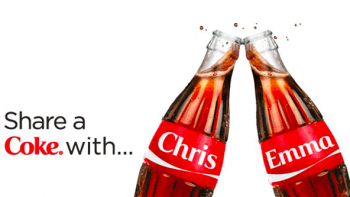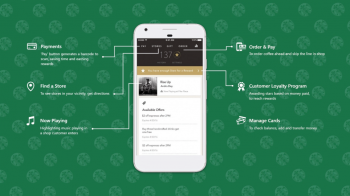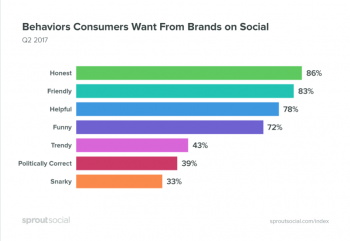Your customer experience must be on-point to grow conversions and drive sales.
Hundreds of the largest B2C consumer brands understand this tenant and have build multi-million dollar companies with this in mind. These brands have succeeded because they understand that the more times you <a href="http://Your customer experience must be on-point to grow conversions and drive sales. Hundreds of the largest B2C consumer brands understand this tenant and have build multi-million dollar companies with this in mind. These brands have succeeded because they understand that the more times you engage and connect with your customers, the more opportunity you have to surpass their expectations. These brands also create content tailored to let customers know that they’re more than just dollar signs.
Often purchasing these goods signals something about the customer like a passion able the environment, or supporting developing nations. B2C brands understand that consumers want to invest their time and money in companies that go above and beyond typical experiences and provide authentic connections. B2B businesses can learn much from this model.
Hyper-focused content can engage your B2B prospects and customers. In fact, 70% of your customers would rather learn about your business through an article as opposed to an advertisement. They want to see that you’ve gone the extra mile to put out content in a useful and meaningful way, so when you create content that is hyper-personalized, it helps foster a long-lasting relationship between you and your customers. But what exactly goes into creating super personalized content?
It doesn’t have to be a complete overhaul of what you have been doing, instead, you can adopt these simple changes and strategies to your current marketing plan.
Keep Your Branding Clear, Concise, and Cohesive
For starters, you want to make sure your customers like what they see and that all platforms you use convey your brand’s style and image.
The last thing you want to do is lose customers because your content is inconsistent or is lacking in uniformity. If your content lacks cohesion, it is easy to get lost in the sea of competitors. You want to share a defined look, one that is memorable and gives customers the right impression.

Sourced by coca-colaindia.com
For example, one leader in branding in the B2C space is Coca Cola; almost everyone can recognize their red and white logo. Some people know the brand so well they brag about being able to pick it out among their competition on taste alone.
Now keep in mind, this brand has been around for years and has a global following that others can only dream of. However, that doesn’t mean they aren’t susceptible to stagnant growth. In 2012, their #shareacoke campaign started as an idea to spread advocacy and love by replacing their logo with consumer names. Coke saw a rise in sales for the first time in over a decade.
B2B brands can learn a lot from this soft drink giant. It has created a brand the world can easily pick out while still working on ways to connect with their consumers. Here are some ways to align your image and become a staple for all your consumers:
● Develop a style guide and apply it to your social media platforms, content, and website
● Create content to educate them on your product, services, and focus on what makes it one of a kind
● Design a memorable logo and make sure you advertise it across all outlets
● Keep your website free of clutter; a minimal site is easier to navigate and makes it user-friendly
● Create content or items that the customer would be proud of, or shows their personality
Save Time and Use Email Automation
The time it would take to contact each customer individually would be a never-ending task.
You do not want to waste crucial time personalizing all your content, so instead, it’s best to strategize and find an efficient system that will make emailing and newsletters efficient and persuasive. That being said, 68% of marketers say personalization based on behavioral data has a high impact on ROI, and 74% say it has a high impact on engagement (yet) only 19% do it.
There is nothing worse than gathering tons of data and not having the time to use it to your advantage, but email automation can help solve that dilemma.
Here is the latest on what you can do to streamline your email marketing:

Sourced from Automizy.com
● Use the double-opt-in feature to build loyal customers
● Use email segmentation to create focused customer lists according to purchase habits, communities, niches, age groups, and personas for specific, high-value targeting
● Implement email triggers to nudge consumers along the buying path. This is especially helpful when a customer has abandoned their shopping cart or stopped midway through a certain consumer action
● Create a hyper-personal email with one-click templates that generate a subscriber’s first name and invites them to take action
● Use call-to-actions to encourage consumers to take the next step after an email in order to land a conversion or capture data
Along with email automation, a mobile app or SMS messaging is another great way to target your consumers. Using automation and multiple platforms to communicate with your consumers can help you reach new demographics, while also providing the exact data you need to churn out the right content for the right people.
Target the Individual Not the Group
Now it’s time to get up close and personal.
To do this, you have to leverage data in order to personalize campaigns and see results. For example, targeting the individual and developing a buyer’s journey based on their habits is a key way to incite them to make a purchase or interact with your products and services.
As a brand, you need to envision your customer waking up in the morning, checking their phone, scrolling through notifications, all while anticipating their next move based on what interactions they had with you in the past. Consider how Starbucks uses its popular mobile app to gain customer insights and track locations.

Sourced from Iowacitytechnologyservices.com
Starbucks keeps customers engaged with its entertaining mobile app. Their application offers rewards, makes ordering easy, and gives the company the information it needs, such as purchase history and location, in order to deploy impactful marketing strategies. With the right data in place, the company can cater to the individual by providing targeted ads and offers. Not to mention, this approach has been favorable for the Starbucks app itself, which generates around 22% of all US sales.
The same applies in the B2B world. Your customers are looking for the right solution to a problem and a partner who can deliver it. How you communicate with them makes a real impact on their decision. Deliver a personalized experience based on their specific needs and how certain product features or service methodologies can help them. Sales and customer experience teams can deliver personalized and on-time content based on actions that a customer takes using tools like Mixmax and Salesforce.
Needless to say, all of your marketing efforts will go to waste if you don’t take the time to get to know your consumers, which is why investing in data software to target the individual is a pivotal move.
Connecting with Consumers Through Social Media
According to research from MarketSherpa, adults between the ages of 18-34 are more likely to interact with a brand through social platforms. Plus, 71% of consumers who have a positive social media experience with a brand are more likely to share it and recommend it to their friends.
Just like how email marketing and brand style guides are an important part of building a community, social media is a powerful tool that connects with users on multiple levels. For example, through Instagram, many top brands are experiencing a per-follower engagement rate of 4.21%, which is 58X higher than growth on Facebook and 120X higher than Twitter. This is because brands have the ability to produce personalized content and interactions directly to the consumer.

Sourced from Sproutsocial.com
Using product giveaways, resharing customer posts, encouraging online reviews, sharing videos through stories and live-streaming, and using hashtags to build campaigns, successful brands are giving customers a chance to engage directly with their mission and lifestyle through the platform, while encouraging them to share their buying experience with the world. And it doesn’t just end there.
On Twitter, 78% of customers who send a complaint to a brand through a tweet expect a response within an hour. Nowadays, nobody wants to bother with sifting through online directories and multiple windows to find a customer service number. Besides, in most cases, you end up speaking to a machine, so why not bypass the wait-time entirely and go directly to the source?
Hyper personalization is all about immediacy. Once you can create a direct line for customers to communicate with, you stop building content for platforms and websites and start delivering value directly to the individual. To give yourself the best odds of creating personalized value to your audience, make sure to have active profiles on Instagram, Facebook, and Twitter and always make yourself accessible to comments and messages.
Amazing Customer Experiences Must be Hyper Personal
As you brainstorm and produce content, always keep your customers’ experiences at the top your list.
What’s in their best interest should be the ultimate motivating factor for your campaigns and strategies moving forward, and with loyal customers by your side you are limitless. Jonathan Lister, a VP and global manager at LinkedIn proposes a change that truly speaks to the importance of high-quality customer experience: “Think about changing the mantra ‘always be closing,’ to ‘always be helping.’”
It’s a simple concept, but this change in thinking captures not only what businesses should do but focuses even more on what customers need. If you focus on what helps, you can easily relate to your consumers and build trust over time.
If you really want to create a strategy that will help scale your business, invest in the right resources and practices. These outlets will help bridge the gap between your brand and success, while bringing you closer to establishing the best customer experience for your consumers.



